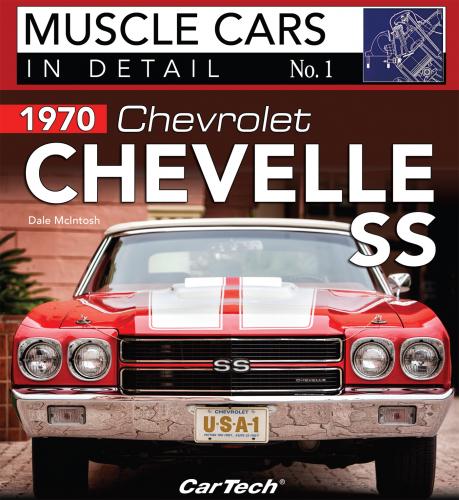Exterior and Interior Color Combinations
Fisher Body Number Plates
Miscellaneous Options
The Future
Value
Production Data
Decode Your VIN
Engine Codes
Gear Ratios
Interior Trim Codes
Assembly Plant Paint Codes
Paint Codes and Sales Names
Convertible and Vinyl Top Colors
Exterior and Interior Color Combinations
Regular Production Options
Thanks to the following Chevelle owners for their technical expertise, photos, proofreading, and tremendous support in putting this book together.
Dave Birdwell, Doug Anderson, Lindy Arnold, Mario Balettie, Tom Bedarsky, Dane Beldon, Jacquie Benthin, Dan Bishop, Keith Brodbeck, Ed Carlson, Clay Counts, Rich Cummings, Carl Funk, Milton George, GM Media Archives, Jim Hudgins, Mark Knass, Dave Krespan, George Lipphardt, Mecum’s Auctions, Dave Meehling, Jack Murray, Ken Nagel, Rick Nelson of MuscleCar Restoration & Design, Mark Redmon, Michael Rothberg, Les Seville, Jim Snyder, RM Sotheby’s Auctions, Bill Stevenson, Jeff Swanty, Dan Tanner, Danny Tarquini, Randy Valle, Ron Wawrinty, Brian Wear, and Mark Young of House of Hardtops.
A special thank you to Rick Nelson of MuscleCar Restoration & Design for always being there to answer not only Chevelle questions but LS6-specific questions and to provide many restoration photos. As one of the premiere restorers of LS6 Chevelles in the country, he has been involved with them long enough to know what is what.
Here is a 1970 SS454 Malibu sport coupe in Shadow Gray with optional RPO ZL2 Special Ducted Hood Air System and black RPO D88 Hood & Deck Stripes that were part of the ZL2 option. (Photo Courtesy Lindy Arnold)
It was late 1963. Tragedy struck the nation with the assassination of our President. On the upside we got fantastic movies including The Great Escape, TV shows such as Lassie, and of course, the British invasion of The Beatles. Amid all this, Chevrolet introduced its iconic A-Body car, the Chevelle.
First unveiled in the fall of 1963, the Chevelle was GM’s introduction to the mid-size car market. The Chevelle was built for model years 1964 through 1977 and was one of GM’s most popular cars. The Chevelle was built in several body styles over its lifetime, including two- and four-door sedans, various station wagon models, convertibles, sedan pickups (or El Caminos), and the most popular body style of them all, the two-door sport coupe, or hardtop. Several series of Chevelles were offered with names such as Chevelle 300, 300 Deluxe, Malibu, SS396, Standard, Concours, Custom, and even Chevelle. These series generally had trim-level differences and available body styles were often limited in the various series.
In 1970 there were no less than seven series available. Buyers could choose from the Nomad station wagon, Standard two-door sport coupe, four-door sedan, and sedan pickup body styles, Greenbrier station wagon in two-seat and three-seat configurations, Malibu in two-door sport coupe, convertible, and sedan pickup body styles as well as a four-door sedan and four-door sport sedan, Concours and Concours Estate station wagons, and finally the Monte Carlo two-door coupe.
Quite a number of engine options appeared over the years. Three 6-cylinder engines from the 194-ci Hi-Thrift and the 230- and 250-ci Turbo-Thrift; five small-block Turbo-Fire V-8 engines in 283, 305, 307, 327, and 350 ci, and three big-block Turbo-Jet V-8 engines in 396, 402, and 454 ci; technically four Turbo-Jet engines if you count the 427-ci version offered as a special Central Office Production Order (COPO) option in 1969 only.
The Buick, Oldsmobile, and Pontiac divisions of General Motors also introduced sporty mid-size models of their own. Although the Buick Skylark and the Oldsmobile Cutlass brands had peppy V-8 engines, Pontiac led the way with its GTO Tempest. Although Buick, Oldsmobile, and Chevrolet were offering V-8 engines in the 250- to 300-hp range, the GTO option was up to 325 hp with its 389-ci engine. The Pontiac with its GTO option is generally credited with starting the modern-day muscle car.
The Malibu SS series was introduced in 1964 and continued through the 1965 model year. Any L6 or V-8 engine could be ordered in the 1964/1965 Malibu SS series. The Pontiac GTO option continued to dominate the GM A-Body horsepower ratings with its 389 V-8 now offered in a 335-hp 4-barrel version and a whopping 360-hp tri-power. The Chevelle could only counter with a late-1964 option of its 327 V-8 with 300 hp but took up the challenge with its 350-hp RPO L79 in 1965.
This 1965 Malibu SS in Madeira Maroon with RPO L79 engine option is an example of Chevrolet’s response to the Pontiac GTO of the day. The final year for the Malibu SS series in the United States was 1965. (Photo Courtesy Rich Cummings)
The Buick Grand Sport was an option on the 1965 Skylark and boasted the 401 V-8 rated at 325 hp while the Oldsmobile 4-4-2 received a new 345-hp 400 V-8.
As a prelude to what was coming, Chevrolet built a special run of the now-legendary RPO Z16 Malibu SS 396. With its 396 V-8 and 375 hp on tap, the gauntlet had been thrown down. Although Chevrolet came up a tad short in the cubic-inch race, for now, the Chevelle was king of the horsepower war. All production Malibu SS 396 Chevelles were built at the Leeds assembly plant in Kansas City and were offered in three colors, Regal Red, Tuxedo Black, and Crocus Yellow.
In 1966, Chevrolet introduced the SS396 series in the sport coupe and convertible body styles only. The series continued through the 1968 model year, which was the only year the SS396 El Camino had its own vehicle identification number (VIN) designation.
Here is a 1966 SS396 sport coupe in the one-year-only Chateau Slate. The first year the SS396 became a series separate from the 300, 300 Deluxe, and Malibu
